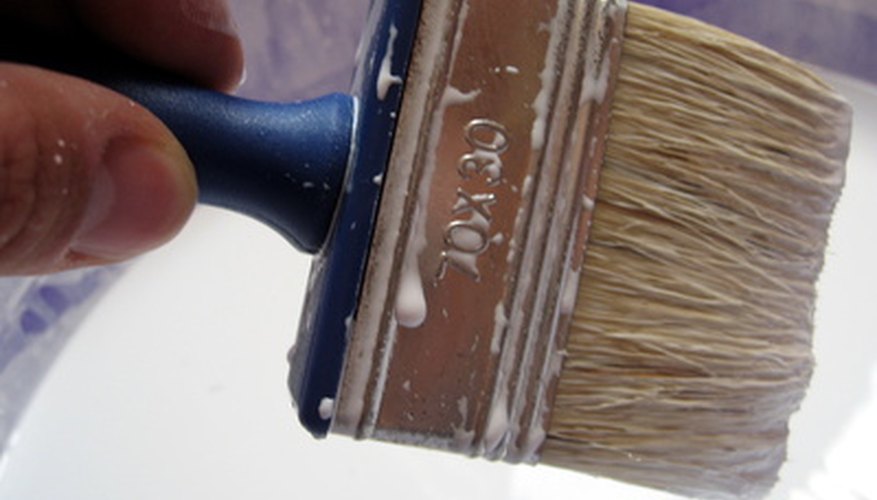"Whitewashing" isn't just a political term, but a necessary garden step if you want to keep fruit trees protected from the elements. Even a thin coat of whitewash will provide protection from the damage that nature wreaks on fruit trees in any stage of maturity.
Cold Protection
Apply whitewash to trees before the onset of winter to protect bark not from cold but from the other effects of winter. Sun scald is a common problem that affects young trees during winter. The light of the sun warms the tree bark during the daylight hours, but cooling nighttime temperatures create a dramatic change that will cause bark to split and crack. Whitewash deflects the warm rays of the sun, so tree bark will stay cool and in one piece during normal day and night cycles.
- Apply whitewash to trees before the onset of winter to protect bark not from cold but from the other effects of winter.
- The light of the sun warms the tree bark during the daylight hours, but cooling nighttime temperatures create a dramatic change that will cause bark to split and crack.
Summer Protection
The sun's heat is even more intense during summer, when fruit trees are most susceptible to sun damage. Any parts of the tree's branches or trunk that are exposed to hot sunlight for the better part of the day should be protected with a layer of whitewash. Trees that become overheated in the summer sun may burn or dry out, creating dead and damaged spots in the tree.
Whitewash Recipe
Mix your own whitewash for trees with water, hydrated lime and ordinary table salt. Pour 1.36kg. of salt into 12 qts. of water and stir to dissolve the salt. Slowly add 4.54kg. of hydrated lime, stirring the entire time. Add a little more water to paint bark that is exceptionally rough and deeply textured. Always apply a single coat of whitewash, allow it to dry, then paint on a second coat. Two coats of whitewash should be sufficient for the entire season, but the paint must be applied again when the next summer or winter arrives.
- Mix your own whitewash for trees with water, hydrated lime and ordinary table salt.
- Two coats of whitewash should be sufficient for the entire season, but the paint must be applied again when the next summer or winter arrives.
Whitewash Paint
Rather than mixing up their own whitewash, some gardeners use ordinary white latex paint. It's important to buy latex-based, pure white paint if you intend to use this on your fruit trees. Mix together regular tap water and the white paint in a 1-to-1 ratio or 2-to-1 ratio. When mixing commercial paint and water together to create whitewash, never use more paint than water or the consistency will be incorrect. Remember that trees are living things, and they are not meant to be painted thickly like a wooden fence.
- Rather than mixing up their own whitewash, some gardeners use ordinary white latex paint.
- It's important to buy latex-based, pure white paint if you intend to use this on your fruit trees.
